A few weeks back, I dispelled some myths surrounding removal in Commander; this week, we’re taking a broader view. You know how to kill your opponents’ cards; now, how do you kill your opponents?
Well, most Commander decks aren’t exactly aggressive, and the time-tested control philosophy goes something like this: Actually killing your opponents is just a formality after the game’s wrapped up through card advantage and copious answers. Therefore, the best way to win is with an incidental kill that doesn’t take up much room in your deck and that can’t be answered. This method has persisted from the days of Rainbow Efreet all the way to modern-day Esper control with Nephalia Drownyard, and it’s served control players well.
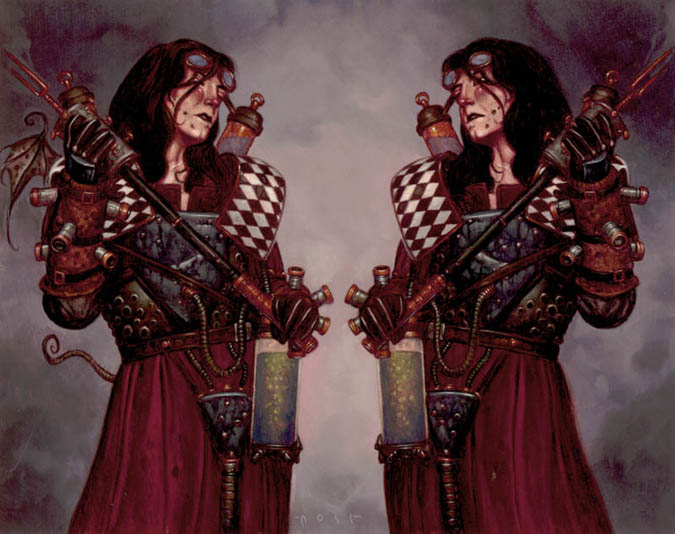
Morphling by RK Post
Commander’s rule set makes meeting these requirements easy: Once you’re in control, you can always just recast you commander and attack each player for the requisite 21 points of damage. There’s just one problem:
It’s no fun.
Commander games are long affairs as it is, but that’s okay because there’s usually something exciting going on. Taking over the game and then making everyone wait around for thirty-three more turns while Grand Arbiter Augustin IV dishes out beats, on the other hand, is a great way to ensure that nobody ever plays with you again. Winning the game should end the game.
Help Me, Obi-Wan Kenobi
The best way to ensure that happens is to never gain full control. That’s not to say you shouldn’t draw cards or answer threats, just that your opponents should always be able to get out of it. That way, they’ll still be playing until you put the final nail in the coffin.
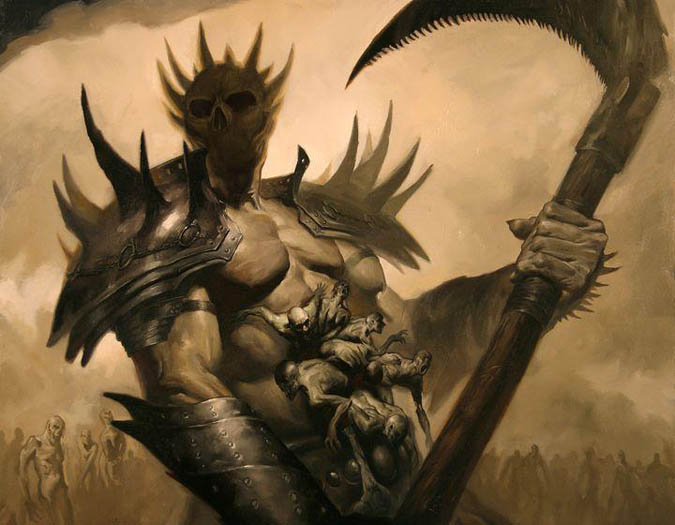
Grave Titan by Lucas Graciano
Or, at least, they’ll still be playing if they have any cards that can deal with your threats. With the new legend rule taking Clone out of the picture, Uril, the Miststalker enchanted with Indrik Umbra is nearly impossible for most decks to deal with, and even something tamer like Thornling or Diabolic Servitude can leave people feeling helpless. Magic thrives on interaction, and that goes out the window when nobody can interact with your cards.
Striking a Balance
That brings us to something of an impasse. In order to do their jobs, threats do need to kill players, but they need to leave hope alive while they do it. Big, vanilla creatures like Lhurgoyf often die before getting much done, so just including a few will leave your deck without any way to win quickly. Even adding evasion with Demon of Death's Gate doesn’t make much impact once the game’s gone late and everybody’s drawing extra removal. In order to ensure you’re doing something, most of your threats need to have an immediate impact.
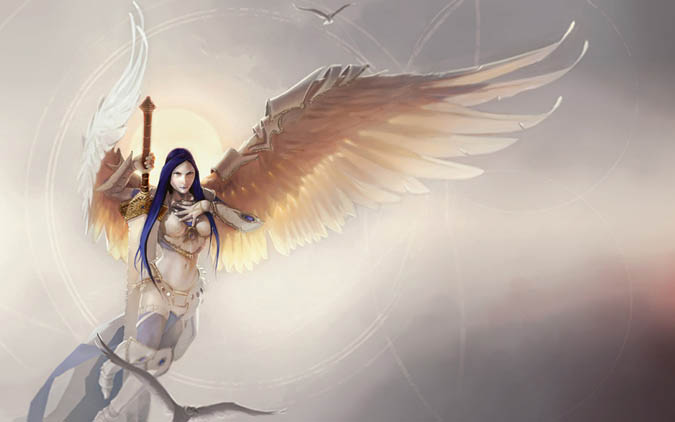
Akroma, Angel of Wrath by Chippy
That can be as simple as having haste or an enters-the-battlefield trigger or as nuanced as Archangel of Strife or Ink-Eyes, Servant of Oni. All that’s important is that it applies some pressure in spite of being dealt with. So, now you have a plethora of options; just pick the kind you like best, and continue on your merry way, right? Not quite.
Novelty
Let’s say, for the sake of argument, that Karrthus, Tyrant of Jund is the ideal threat. Even so, if you play Karrthus as your Commander and plan to win by attacking with him, things are going to become pretty frustrating for your opponents who have trouble keeping him off their backs. But the lack of surprise and inevitability both stem from the Commander rules; surely, we can fix things by playing a bunch of similar cards in places other than the commander slot: Hellkite Overlord, Spirit of the Night, Molten Primordial, and Rorix Bladewing. Now you’re playing a bunch of fun threats! The problem is that they’re all the same. One player will be blown out by the unexpected hasty threat, and it’ll be exciting. Then another. And another. And then next game, the same thing will happen. And slowly, that cool moment will become an aggravating one.
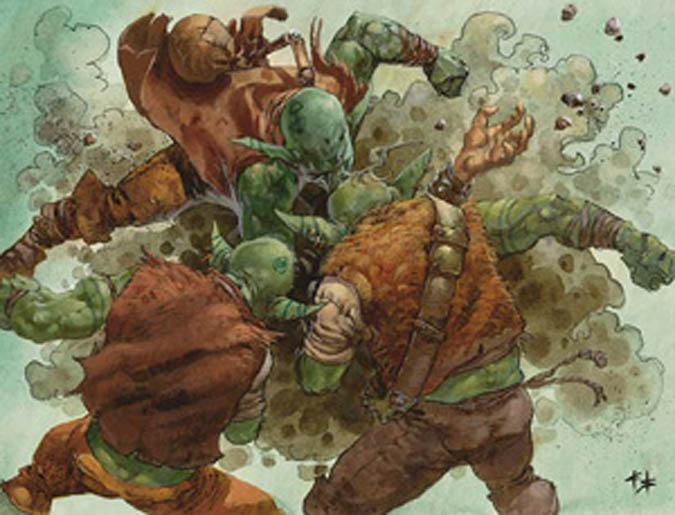
Aggravated Assault by Greg Staples
Fun requires variance. That, in fact, is the impetus behind the singleton rule in Commander. The more diversity you have in card functionality, the more novel situations you’ll run across and the more games you’ll get out of a deck before it becomes dull to play. So, rather than play all of those haste creatures, include one or two along with Terastodon, Avatar of Slaughter, and Zhur-Taa Ancient. Run a bunch more threats to make sure that every game ends differently, and mix up your decklist every once in a while. Now you’re well on your way to avoiding repetition; there’s just one last hurdle. Do you like the idea of a threat that’s also an answer in your green deck? Well, everyone else is already playing Terastodon, Duplicant, Woodfall Primus, and Sylvan Primordial. The truth of the matter is that there are only so many high-impact attackers, and people are already overexposed to the ones that are good in every deck.
In order to really keep things fresh, you need to not only keep your threats distinct from one another, but also from the cards that are ubiquitous in your playgroup. Are you playing tokens? Try Silver Seraph instead of Sun Titan. Your self-mill deck can use Jarad, Golgari Lich Lord instead of Kokusho, the Evening Star; your Niv-Mizzet, Dracogenius deck can use Empyrial Plate rather than Sword of Fire and Ice; your Vorel of the Hull Clade deck can run Triskelion over Duplicant. Not only will these choices allow for more replayability, they make everything else your deck is doing mesh better. Theming underlies the cohesiveness that takes your deck from well-crafted to masterpiece.
Public Enemy #1
Your threats are picked, your deck built, your game begun. Now comes the hardest question: When do you deploy your threats? There’s no easy answer, but there are a number of factors to consider.
Will it be the biggest threat on the board?
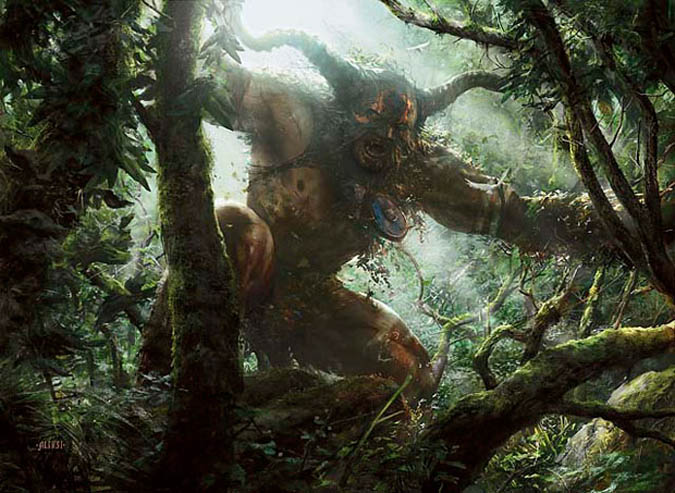
Primeval Titan by Aleksi Briclot
If you play a threat that puts you in a dominant position, there are four possible outcomes.
- Somebody will answer it.
- Somebody will deploy an even larger threat.
- Everyone will try to avoid incurring your wrath.
- The whole table will gang up on you.
The response depends upon how likely the other players think they are to neutralize the threat later on and how well you can defend yourself, but generally, it’s not wise to take center stage without the resources to fight off all the other players.
But what about when it won’t be the biggest threat on the board? What if somebody else has a card that draws even more focus? Then your answer mostly depends on what removal is running around your playgroup. How likely is it that the bigger threat will die and you’ll end up with a target painted on your head? If your group plays a lot of point removal, that bigger threat is practically a totem armor Aura for yours. On the other hand, in a field full of Damnations, another threat makes it even more likely that yours will die, and if you hold back, the Wrath may be played anyway. There are a lot of factors at work, which can naturally lead to indecision, so when in doubt, I have a simple rule:
Play your threats because Magic is more fun when something is happening.
























